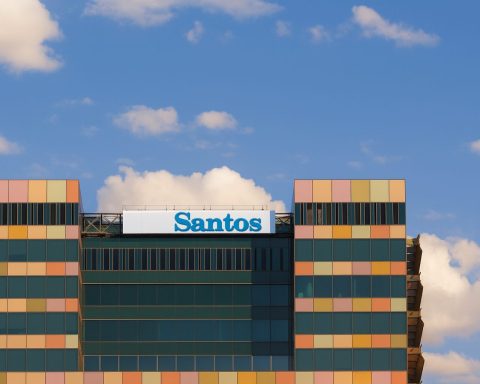Sydney – 26 November 2025 (ASX: CBA)
Commonwealth Bank of Australia’s (ASX: CBA) share price is trading around A$154.67 today, up roughly 1% from yesterday’s close of A$153.14, after opening at A$154.50 and trading between A$153.53 and A$154.91. [1]
The modest bounce comes after a volatile November in which Australia’s biggest bank fell sharply from early‑month highs near A$179, following a mixed September‑quarter trading update and growing political scrutiny over fees and the housing market. [2]
Below is a full rundown of what’s moving CBA stock today, 26 November 2025, and what investors are watching next.
CBA share price snapshot for 26 November 2025
Using the latest available data:
- Last price: ~A$154.67
- Change vs yesterday: +1.0% (from A$153.14) [3]
- Today’s range: A$153.53 – A$154.91 [4]
- Volume (so far): ~187k shares, well below the typical multi‑million average, suggesting a quieter session following earlier volatility. [5]
Despite today’s gain, CBA shares remain:
- Around 13–14% below the early‑November peak just under A$179. [6]
- Roughly flat for calendar 2025, having started the year near A$153, traded as high as A$192 and as low as A$140.21. [7]
On fundamentals, Market Index data show:
- Earnings per share (EPS): ~A$6.05
- Dividends per share (DPS, last 12 months): A$4.85
- Book value per share: ~A$47.12 [8]
At today’s price, that implies roughly:
- Trailing P/E: ~25–26 times
- Trailing dividend yield: just over 3.1% (or about 4.5% grossed up for franking credits)
- Price‑to‑book: around 3.3 times
Those metrics underline why many analysts still see CBA as richly valued, even after November’s pullback.
What November’s 1Q26 trading update revealed
CBA’s 1Q26 (September‑quarter) trading update, released on 11 November, is still the main reference point for investors assessing the stock. [9]
Key numbers from the quarter:
- Cash NPAT: about A$2.6 billion, up 1% on the average of the previous half‑year quarters and up 2% on the prior corresponding period. [10]
- Operating income: up around 3% quarter‑on‑quarter, driven by loan and deposit volume growth and an extra 1.5 billing days in the period. [11]
- Net interest income (NII): grew 3% QoQ and 5% YoY, according to broker commentary. [12]
- Net interest margin (NIM): edged lower, with management pointing to strong growth in lower‑yielding liquid assets and institutional repos, as well as competition and deposit switching. [13]
- Loan impairment expense: around A$200–220 million, with impaired loans steady at roughly 0.94% of exposures, suggesting asset quality remains solid. [14]
- Capital: CET1 (Level 2) ratio of 11.8%, about 155 bps above the APRA minimum, after paying A$4.4 billion of 2H25 dividends. [15]
- Funding mix: customer deposits now represent 79% of total funding, with household deposits up A$17.8 billion in the quarter and A$16 billion of long‑term wholesale funding raised year‑to‑date. [16]
On the face of it, those numbers look “business as usual”: modest income growth, still‑strong capital and stable credit quality. A Jarden analyst quoted by ShareCafe described the update as showing “steady performance”, even as NIM pressure continues. [17]
Why the share price still sank
Despite the respectable headline profit, the market reaction on 11 November was brutal:
- CBA shares tumbled more than 6%, closing around A$163.40 and wiping roughly A$18.5 billion from its market value in a single session, according to an ABC markets wrap. [18]
Commentary from that day singled out:
- NIM compression and rising cost pressures.
- The perception that, at valuations well above peers and many global banks, CBA had no room for disappointment. [19]
Since then, the stock has drifted lower into the mid‑A$150s, leaving November looking like a reset in expectations rather than a collapse in the underlying franchise.
Macro backdrop: inflation, interest rates and housing
Today’s trading in CBA shares is playing out against a noisy macro backdrop.
Inflation and rate expectations
The ASX 200 is trading higher today as investors digest fresh inflation data and increasingly confident bets on US Federal Reserve rate cuts. The ABC’s live markets blog notes the index was up about 1% in early trade, with risk‑on sentiment across most sectors. [20]
Locally, the Australian Bureau of Statistics just released its first “full” monthly CPI, showing annual headline inflation at 3.8% in October, up from 3.6% and still above the Reserve Bank’s 2–3% target band. [21]
CBA’s own chief economist Luke Yeaman recently warned that:
- The economy is running close to its “speed limit”, with lower potential growth and limited spare capacity.
- That combination, plus faster house price gains, means interest rate cuts are off the table and the risk of rate hikes in 2026 has risen—although the bank’s base case is for rates to remain on hold through 2026. [22]
For bank investors, a steady‑but‑not‑falling cash rate can be a double‑edged sword: it protects margins from collapsing but also keeps pressure on stressed borrowers and slows volume growth.
Housing demand “too high”
At a parliamentary hearing last week, CBA CEO Matt Comyn told lawmakers that demand for home loans is “too high” and helping to push property prices up, even while acknowledging CBA benefits from the boom. He argued that a slightly lower credit growth rate would be healthier for long‑term financial stability and access to housing. [23]
He also indicated the bank expects the RBA cash rate to sit around 3.6% through 2026, given inflation remains elevated. [24]
For CBA shareholders, this underscores the dilemma: the bank is gaining share and growing its mortgage book, but management is signalling that volumes may need to cool for the sake of financial stability and political optics.
Political and regulatory heat: the ‘excessive fees’ debate
CBA is also facing intense scrutiny over customer fees, which could influence sentiment toward the stock.
- ASIC found that CBA and its Bankwest subsidiary charged about A$270 million in fees—including account‑keeping, dishonour and overdraw charges—to around 2.2 million low‑income customers over five years, classifying them as “excessive fees”. [25]
- At a parliamentary committee this month, Matt Comyn argued that refunding all those fees might be seen as an “appropriation” of shareholder money, noting the charges were made in line with terms and conditions. Consumer groups strongly disagreed, saying shareholders should never have received those funds in the first place. [26]
Other banks, such as Westpac, have committed to fully refund similar fees to affected customers. [27]
For investors, the episode highlights:
- Reputational risk: political anger at “excessive profits” can morph into tighter regulation or forced remediation.
- Margin pressure over time: if regulators or the market push for lower banks fees and charges, some of the sector’s most reliable profit streams could be squeezed.
Given CBA already trades at a premium to peers, any perception that its pricing power may be curbed matters for long‑term valuation.
Technology, AI and leadership change
Digital capability has long been one of the reasons CBA commands a valuation premium. That makes its latest leadership move noteworthy.
On 24 November, the bank announced that Group Executive Technology and Group CIO Gavin Munroe will leave CBA on 22 December. CEO Matt Comyn credited Munroe with:
- Accelerating CBA’s technology modernisation.
- Completing the migration of its SAP core banking platform to AWS, described as the bank’s largest system‑of‑record migration.
- Strengthening its AI capabilities, with CBA claiming a top‑five global ranking for AI maturity in financial services. [28]
In the interim, Rodrigo Castillo (CIO Central Technology) and Victoria Ledda (CIO Business Technology) will co‑lead the technology function, reporting directly to Comyn. [29]
The message to investors is one of continuity in CBA’s tech strategy, which is central to its high return on equity and efficiency goals. Still, markets will be watching for a permanent appointment and any sign that execution momentum slows.
Valuation check: still priced for perfection?
Even after the November sell‑off, plenty of analysts argue that CBA remains expensive.
Morningstar’s latest note on the bank, published after the trading update, summarises the tension well:
- It estimates quarterly profit of A$2.6 billion was roughly in line with expectations, with NII up 3% and arrears improving on the back of lower rates and inflation. [30]
- But Morningstar maintains a fair value estimate around A$100 per share, calling CBA “materially overvalued” at current prices.
- At the time of that report, with CBA trading higher than today, the stock was on a forward P/E near 26, a dividend yield around 3% and a price‑to‑book ratio close to 3.8 times, far above peers. [31]
A separate analysis on Firstlinks earlier this year pointed out that CBA, at one point, made up about 12% of the S&P/ASX 200 index, trading around 29x forecast FY26 EPS, a dividend yield under 3% and roughly four times book value—multiples the author described as extreme compared with global banks like JPMorgan. [32]
Even allowing for the recent pullback to the mid‑A$150s, CBA’s valuation multiples remain well above both local peers and many offshore majors. Bulls argue that its deposit franchise, technology lead and balance‑sheet strength justify the premium; bears worry that low‑single‑digit earnings growth won’t be enough to support such pricing over the long term. [33]
Dividend outlook and income appeal
CBA’s income profile is central to its popularity with Australian retail investors and super funds.
Recent dividend history (from Market Index):
- Interim FY25 dividend: A$2.25 per share, fully franked
- Final FY25 dividend: A$2.60 per share, fully franked
- Total FY25 dividend: A$4.85 per share [34]
At today’s share price:
- The cash yield is just over 3.1%.
- The grossed‑up yield (including franking credits) is closer to 4.5% for eligible investors.
Morningstar expects CBA to deliver mid‑single‑digit earnings growth over the next five years and sees the bank as well placed to keep growing dividends, thanks to a strong capital position and conservative provisioning. [35]
However, income investors should remember:
- A large part of CBA’s historic return has come from share price appreciation, driven by multiple expansion.
- If the P/E multiple drifts back toward long‑run averages, future returns may rely more heavily on earnings and dividend growth, which consensus expects to be modest.
Key risks and catalysts to watch
Looking ahead from today’s trading session, several issues could influence CBA’s share price over coming months:
- Inflation path and RBA decisions
- If inflation remains sticky around or above current levels, the RBA could keep rates restrictive for longer—or even raise them in 2026, as CBA’s economists warn is a possibility. [36]
- Higher‑for‑longer rates would support margins but increase the risk of rising arrears and bad debts.
- Housing market and credit growth
- Strong investor demand and policy support for first‑home buyers are pushing dwelling approvals and prices higher, which helps loan growth but intensifies political risk. [37]
- Regulatory outcomes on fees and customer treatment
- ASIC’s findings on “excessive fees” and the contrasting approaches of CBA and Westpac could lead to further guidance, remediation or reputation‑driven customer switching. [38]
- Technology execution post‑CIO change
- Investors will watch for any delays or cost overruns in CBA’s cloud and AI initiatives following Gavin Munroe’s departure, although management has stressed that the strategy remains unchanged. [39]
- Upcoming results and guidance
- Market Index lists CBA’s next interim reporting date as 11 February 2026, with preliminary and annual FY26 results currently scheduled for August 2026. [40]
- Any update on margins, cost growth and capital management (buybacks or special dividends) will be closely scrutinised.
Bottom line on CBA shares today
On 26 November 2025, CBA stock is:
- Trading around the mid‑A$150s, recovering slightly from last week’s lows but still well below early‑November levels. [41]
- Supported by steady quarterly earnings, strong capital and dominant market share, especially in mortgages and transactional deposits. [42]
- Constrained by valuation concerns, macro uncertainty and rising political pressure over housing and customer fees. [43]
For long‑term investors, the core question remains unchanged:
Does CBA’s quality, scale and technology lead justify paying one of the richest bank valuations in the world?
Today’s gentle bounce suggests some buyers are comfortable paying up for stability and fully franked income. Others are waiting for either a deeper pullback or clearer evidence that earnings growth can keep up with the premium price tag.
Important note: This article is general information only and does not take into account your objectives, financial situation or needs. It is not personal financial advice or a recommendation to buy or sell any security. Share prices and statistics are approximate and may have changed since the time of writing; always check live market data and consider speaking to a licensed financial adviser before making investment decisions.
References
1. au.investing.com, 2. au.investing.com, 3. au.investing.com, 4. au.investing.com, 5. au.investing.com, 6. au.investing.com, 7. www.intelligentinvestor.com.au, 8. www.marketindex.com.au, 9. announcements.asx.com.au, 10. announcements.asx.com.au, 11. announcements.asx.com.au, 12. www.sharecafe.com.au, 13. announcements.asx.com.au, 14. announcements.asx.com.au, 15. announcements.asx.com.au, 16. announcements.asx.com.au, 17. www.sharecafe.com.au, 18. www.abc.net.au, 19. www.abc.net.au, 20. www.abc.net.au, 21. www.abc.net.au, 22. www.commbank.com.au, 23. www.reuters.com, 24. www.reuters.com, 25. www.theguardian.com, 26. www.theguardian.com, 27. www.theguardian.com, 28. www.commbank.com.au, 29. www.commbank.com.au, 30. www.morningstar.com.au, 31. www.morningstar.com.au, 32. www.firstlinks.com.au, 33. www.morningstar.com.au, 34. www.marketindex.com.au, 35. www.morningstar.com.au, 36. www.commbank.com.au, 37. www.commbank.com.au, 38. www.theguardian.com, 39. www.commbank.com.au, 40. www.marketindex.com.au, 41. au.investing.com, 42. announcements.asx.com.au, 43. www.morningstar.com.au







